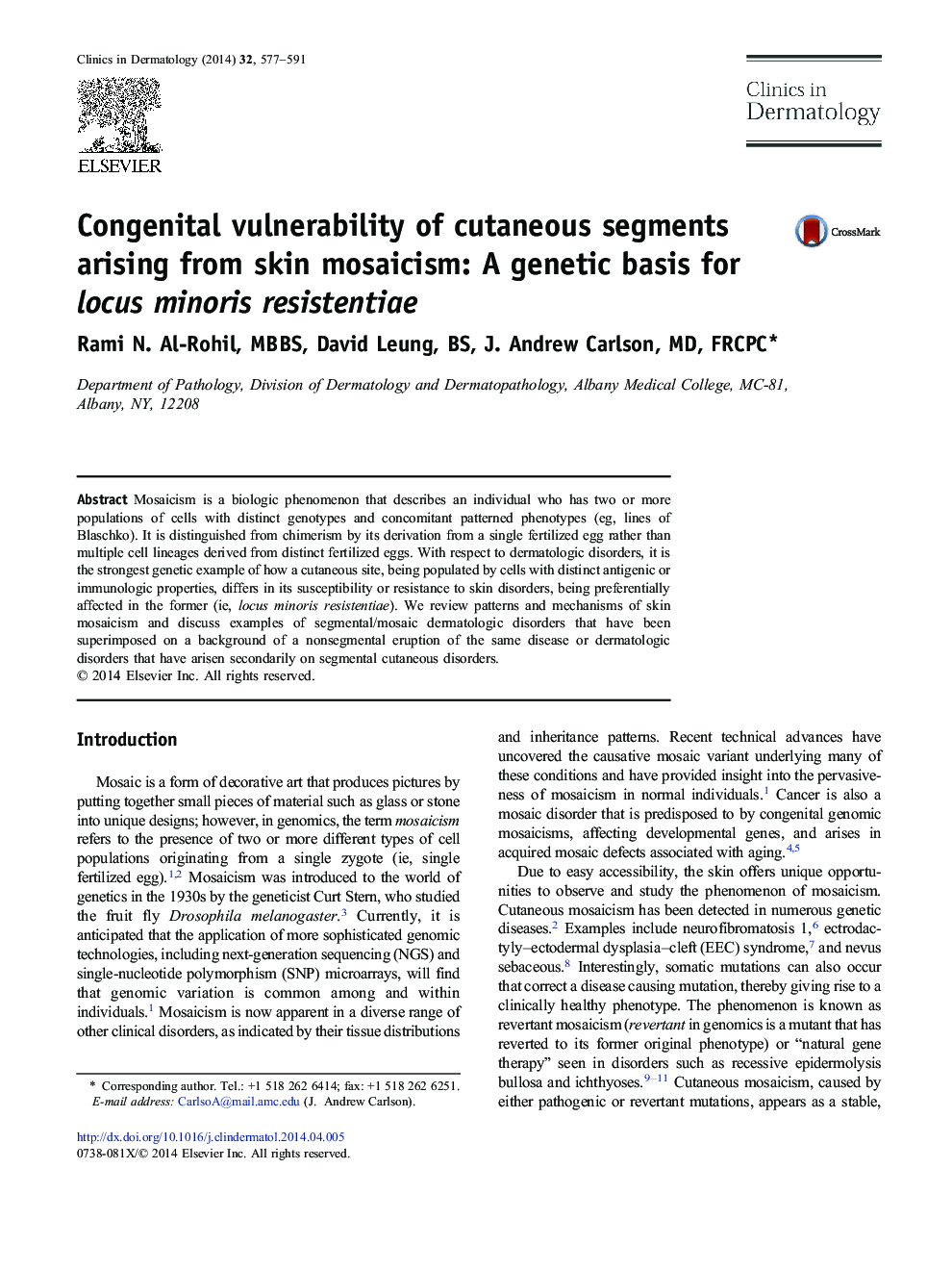| Article ID | Journal | Published Year | Pages | File Type |
|---|---|---|---|---|
| 3194136 | Clinics in Dermatology | 2014 | 15 Pages |
Mosaicism is a biologic phenomenon that describes an individual who has two or more populations of cells with distinct genotypes and concomitant patterned phenotypes (eg, lines of Blaschko). It is distinguished from chimerism by its derivation from a single fertilized egg rather than multiple cell lineages derived from distinct fertilized eggs. With respect to dermatologic disorders, it is the strongest genetic example of how a cutaneous site, being populated by cells with distinct antigenic or immunologic properties, differs in its susceptibility or resistance to skin disorders, being preferentially affected in the former (ie, locus minoris resistentiae). We review patterns and mechanisms of skin mosaicism and discuss examples of segmental/mosaic dermatologic disorders that have been superimposed on a background of a nonsegmental eruption of the same disease or dermatologic disorders that have arisen secondarily on segmental cutaneous disorders.
